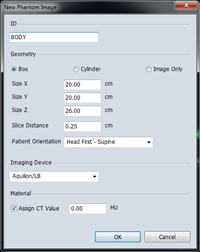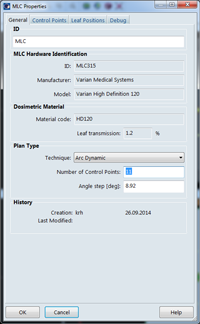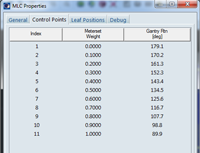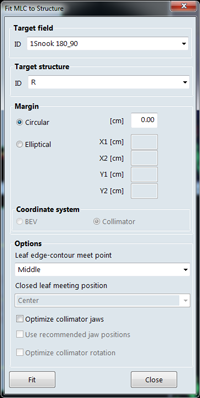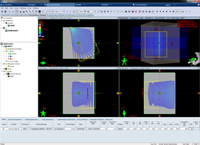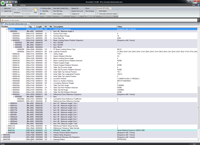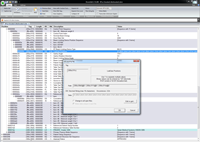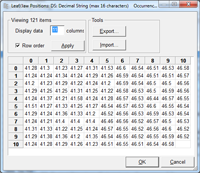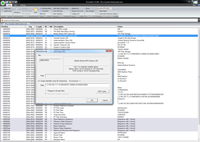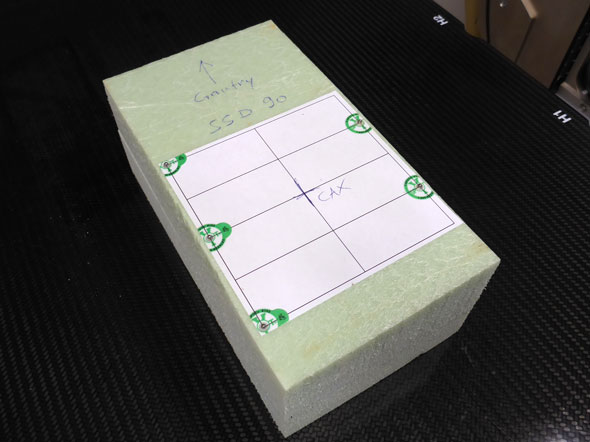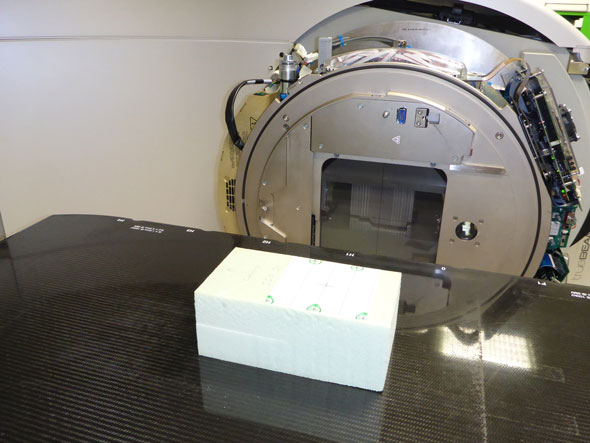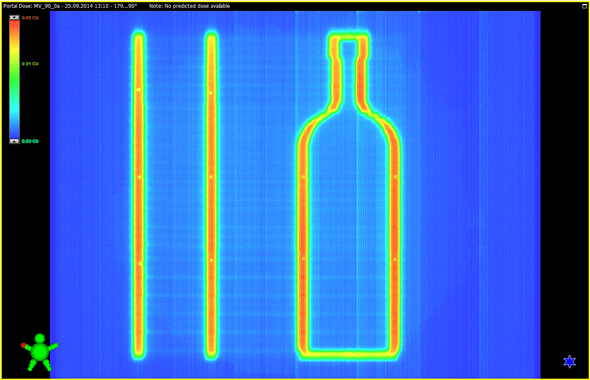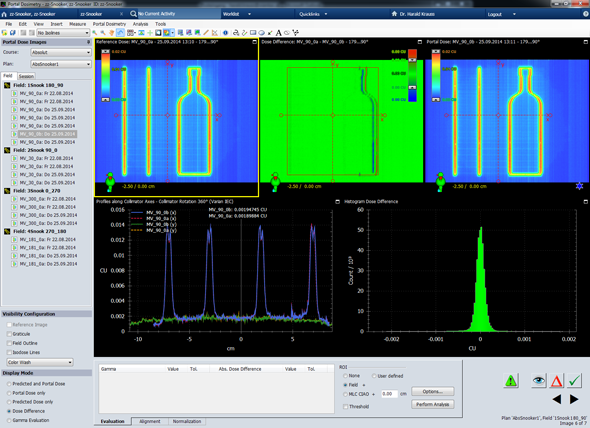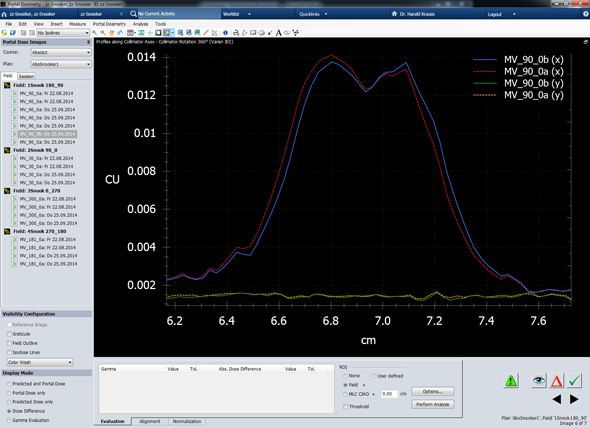RapidArc machine QA should be as simple and efficient as possible. The Snooker Cue test was "designed to allow a quick routine assessment of the correct interplay between gantry angle, MLC position, and dose delivery in one single treatment plan by means of the EPID." (Ann Van Esch, 2011).
We set up a dedicated RapidArc plan, built the necessary phantom, and performed the test on our TrueBeam:
If everything goes as planned, small dots are visible in each of the vertical stripes. The planned stripe width is 6 mm.
This is a screenshot halfway into delivery of the first out of of four arc fields:

(you are right: the MV imager asks for a calibration of the dosimetry modes ...)
The Phantom (Revision 1)
The small dots on the integrated MV images are radioopaque markers. We tested the suitability of different marker types (lead, steel) and diameters. One possibility is to use Beekley spots made of steel (Y-Spots/2mm, V-Spots/2.5mm, Z-Spots/4.3mm).
The phantom we used for MV imaging contains five Beekley Y-Spots (2mm diameter), which were placed on a scaled printout. The outer square of the printout is 10 x 10 cm.
The sole purpose of the block of radiation transparent styrofoam is to raise the BBs above table surface, so that the couchtop cannot disturb the MV images at oblique beam incidence.
The next photo gives an idea of the setup. When the Gantry is at 0°, SSD is 90 cm. It is best to align the BBs with the horizontal side lasers first, and then raise the couch by 10 cm. In our case, the block is around 8 cm thick, so isocenter will be below couch surface.
The test is very demanding. Small deviations in RapidArc delivery can happen, even on a TrueBeam ;-)
The above animation blends two successive deliveries of the first RapidArc field. While the first three stripes are at constant positions relative to the markers, the rightmost stripe wiggles around a little. Here is a zoom:

Portal dosimetry workspace can be used to quantify the shift. We are interested in a horizontal (x-) profiles across the images, which have four peaks:
This is a zoom into the rightmost of the four peaks:
The central profile depression is from the marker. Although it is not possible to measure distances directly in this graph, by looking at the horizontal axis one can see that the profiles are shifted by approximately 0.3 mm.
Discussion
The radioopaque markers serve as landmarks in space1, just like the tumor, which has to be hit with high precision. In this sense, the Snooker Cue test is very realistic. But while clinical plans rarely push the envelope of the machine, the Snooker arcs require high values of gantry acceleration and deceleration, high and low values of gantry speed (0.5 deg/sec during delivery, 6.0 deg/sec while beam is on hold) and high and low values of MU/deg. Only the correct interplay of all components will provide successful delivery.
The result is immediately visible on the images, due to the markers.
Revision 1 of our phantom serves as a proof of principle. A Revision 2 model would have to be made with higher precision. Small deviations in marker placement could be misinterpreted as delivery errors. Laser misalignment or simple setup errors are other possible sources of error.
Notes
1This makes a big difference to "EPID only" delivieries without phantom, such as Varian RapidArc commissioning tests, where there is no relation to fixed points in space.
